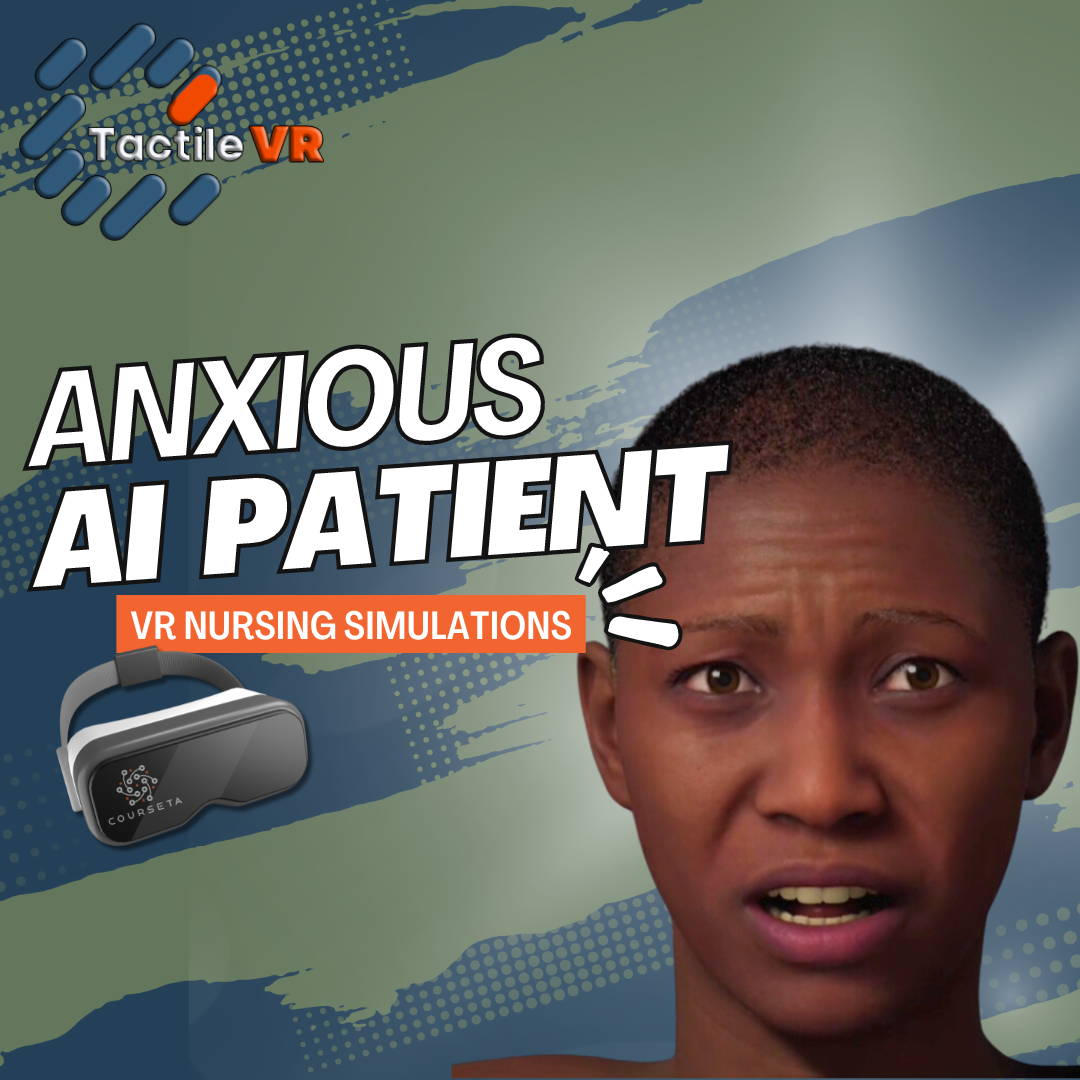Communicating with AI Patients
inside VR Nursing Simulations

Communicating with AI Patients inside VR Nursing Simulations
JUNE 18, 2024
In this article, we will discuss the latest advanced capabilities of AI characters designed to help nursing students and nurses practice communication skills. We will also highlight that not all AI characters are created equal. There is a significant difference between those with dynamic, emotion-driven responses and those that follow pre-scripted dialogues. Understanding these differences, along with their respective limitations, is crucial for nursing educators to understand for proper implementation.
Dynamic AI Characters
Dynamic AI characters are equipped with sophisticated algorithms that allow them to respond to user input in real-time, with a range of emotions and reactions. These AI entities are often powered by machine learning models trained on vast datasets of human interactions. Here’s what sets them apart:
1) Realism in Interaction:
Dynamic AI characters can simulate realistic patient interactions by interpreting and responding to the nuances of the student's communication. They can exhibit a spectrum of emotions such as happiness, sadness, frustration, and empathy, making the interaction feel more genuine.
2) Adaptability:
These AI characters can adapt their responses based on the context and the flow of conversation. For example, if a student expresses concern or empathy, the AI can respond with gratitude or reassurance, mimicking real-life patient behavior.
3) Learning Opportunities:
The dynamic nature of these interactions provides a rich learning environment where students can practice and hone their communication skills. They can receive immediate feedback on their approach, helping them understand the impact of their words and tone.
However, despite their advanced capabilities, dynamic AI characters have limitations:
-Complexity and Cost:Developing and maintaining these systems is resource-intensive, making them expensive. Fortunately, programs such as Courseta VR covers these costs and ensures it does not effect the nursing program's budget.
-Data Dependency:The effectiveness of dynamic AI characters heavily relies on the quality and diversity of the data they are trained on. If the data lacks representation of various patient demographics or conditions, the AI may not perform optimally in all scenarios. However, programs such as Courseta VR are fed data from numerous nursing educators and students to ensure accuracy in conversation throughout each use.
Scripted AI Characters
Scripted AI characters follow a predetermined set of dialogues. These are designed to guide students through specific scenarios with set responses. While less advanced, they still offer valuable benefits:
1) Structured Learning:
Scripted interactions can be beneficial for beginners as they provide a clear and predictable framework. Students can focus on learning specific communication protocols and responses without the complexity of dynamic interactions.
2) Cost-Effective:
These systems are generally less expensive to develop and implement, making them accessible to a broader range of educational institutions.
3) Consistency:
Scripted dialogues ensure uniformity in training, ensuring that all students receive the same educational experience and are tested under identical conditions.
Nevertheless, scripted AI characters also have their drawbacks:
-Limited Realism: The lack of emotional nuance and adaptability makes these interactions less realistic. Student may not experience the unpredictability and emotional variability that real patient interactions entail.
-Predictability: Student may eventually memorize the scripts, reducing the educational value of the exercise and opportunity of critical thinking. This predictability fails to prepare them for the spontaneous and dynamic nature of real-world communication with patients.
Conclusion
Share this Article

Ready to Discover Courseta VR?
Watch the Video
Dynamic AI Conversation Demo
AI Patients inside Courseta VR
